1 of 27
Download to read offline





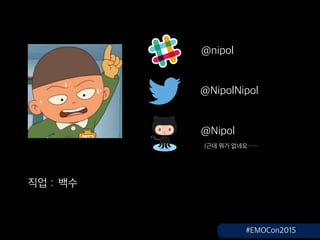



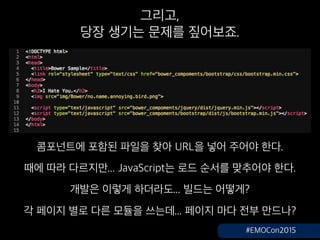


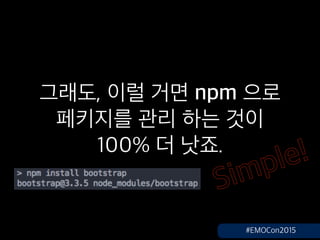
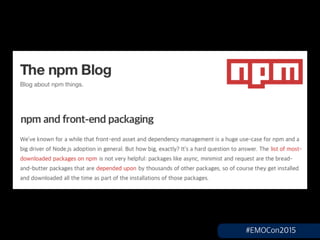
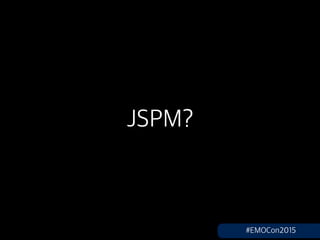
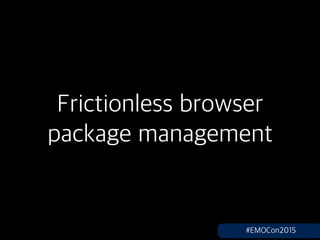

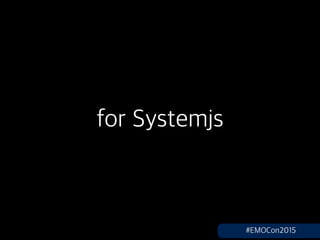
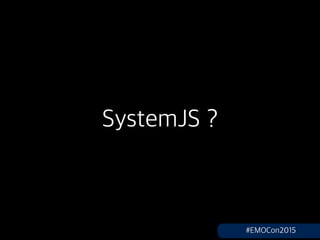
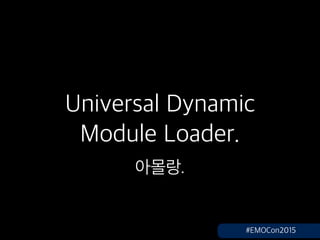


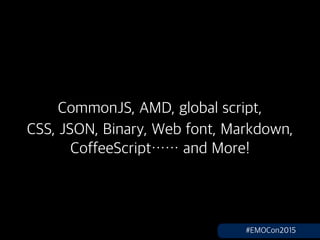
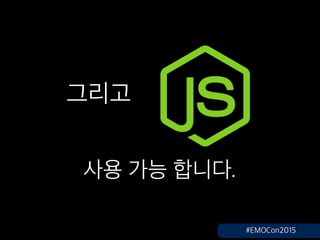
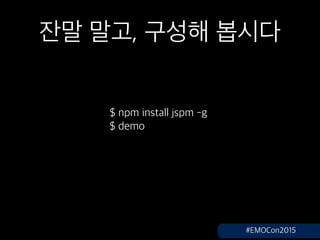


Ad
Recommended
MFC ?? (1)
MFC ?? (1)?? ?
?
MFC ?? 1?? ?????.
GUI?????? ??? ????? ?????.
MFC? ??? SDK(API)?? ??, Qt ????? ??? ??, ??? ??? ?? ? MFC ??? ??? GUI ? ?? ????? ??? ?? ??? ???.
MFC? SDK(API) ??? ?? MFC? ???? ??? ?????. ?? MFC? ? ??? ?? ????? ???? ??? ???.
MFC? ?????? ?? ?????? ??? MFC? ???? ?????? ?? ??? ??????.
????? MFC? ?? ????? ??? ??? ??? ??????.?? ???? ??
?? ???? ??Kyoung Up Jung
?
2013? 8? 31?? ??? speakerdeck? ??? ?? ??
https://speakerdeck.com/perhapsspy/mweonji-moreujiman-balpyo-aspeseo-djangoro-olmgyeogan-sayeon
---
? ???? ???(?? ???)???.
ASP ??? ??? Django? ?? ? ???? ???? ????? ???????.[Korea Linux Forum] Implementing web based online multiplayer tetris with Ope...
[Korea Linux Forum] Implementing web based online multiplayer tetris with Ope...JinKwon Lee
?
Implementing Web Based Online MultiPlyaer Tetris with OpenSource[?????] ????? ?? ???? ?? ??
[?????] ????? ?? ???? ?? ?? ?? ?
?
????? ?? ?? ?? ??,
?? ?? http://www.youtube.com/watch?v=KE4izpusy7oJavascript ???
Javascript ???Herren
?
JavaScript ecosystem by Seha
??????? ??, ?? ? ?????, ?????, ????? ?? ??
??? ? ? ???????(__)System webpack-jspm
System webpack-jspmJesse Warden
?
This document discusses JavaScript module systems including CommonJS, RequireJS, Browserify, ES6 modules, Webpack, and JSPM. It begins with a history of JavaScript modules and loading external scripts. It then covers CommonJS for Node.js, RequireJS for asynchronous loading in browsers, and Browserify for using CommonJS modules in browsers. ES6 modules are described as the standard module solution. Webpack is presented as a module bundler with many features. Finally, JSPM is discussed as a package manager that works with SystemJS to provide modules from npm and GitHub for both browsers and Node.js.JavaScript Dependencies, Modules & Browserify
JavaScript Dependencies, Modules & BrowserifyJohan Nilsson
?
This document discusses the importance of using proper tools to manage JavaScript dependencies and modules, highlighting the evolution and complexity of JavaScript tooling over time. It contrasts traditional website development with web applications, emphasizing the need for structured approaches such as module systems, package managers, and build tools. Additionally, it explores various module definitions like AMD, CommonJS, and UMD, and introduces Browserify as a solution for managing modules in a browser environment.More Related Content
What's hot (20)
?? ???? ??
?? ???? ??Kyoung Up Jung
?
2013? 8? 31?? ??? speakerdeck? ??? ?? ??
https://speakerdeck.com/perhapsspy/mweonji-moreujiman-balpyo-aspeseo-djangoro-olmgyeogan-sayeon
---
? ???? ???(?? ???)???.
ASP ??? ??? Django? ?? ? ???? ???? ????? ???????.[Korea Linux Forum] Implementing web based online multiplayer tetris with Ope...
[Korea Linux Forum] Implementing web based online multiplayer tetris with Ope...JinKwon Lee
?
Implementing Web Based Online MultiPlyaer Tetris with OpenSource[?????] ????? ?? ???? ?? ??
[?????] ????? ?? ???? ?? ?? ?? ?
?
????? ?? ?? ?? ??,
?? ?? http://www.youtube.com/watch?v=KE4izpusy7oJavascript ???
Javascript ???Herren
?
JavaScript ecosystem by Seha
??????? ??, ?? ? ?????, ?????, ????? ?? ??
??? ? ? ???????(__)Viewers also liked (14)
System webpack-jspm
System webpack-jspmJesse Warden
?
This document discusses JavaScript module systems including CommonJS, RequireJS, Browserify, ES6 modules, Webpack, and JSPM. It begins with a history of JavaScript modules and loading external scripts. It then covers CommonJS for Node.js, RequireJS for asynchronous loading in browsers, and Browserify for using CommonJS modules in browsers. ES6 modules are described as the standard module solution. Webpack is presented as a module bundler with many features. Finally, JSPM is discussed as a package manager that works with SystemJS to provide modules from npm and GitHub for both browsers and Node.js.JavaScript Dependencies, Modules & Browserify
JavaScript Dependencies, Modules & BrowserifyJohan Nilsson
?
This document discusses the importance of using proper tools to manage JavaScript dependencies and modules, highlighting the evolution and complexity of JavaScript tooling over time. It contrasts traditional website development with web applications, emphasizing the need for structured approaches such as module systems, package managers, and build tools. Additionally, it explores various module definitions like AMD, CommonJS, and UMD, and introduces Browserify as a solution for managing modules in a browser environment.Finally, Professional Frontend Dev with ReactJS, WebPack & Symfony (Symfony C...
Finally, Professional Frontend Dev with ReactJS, WebPack & Symfony (Symfony C...Ryan Weaver
?
The document outlines a presentation on modern JavaScript development, highlighting tools like ReactJS, Webpack, and Babel. It discusses ES6 features, module loading, and integrates concepts such as CSS and image handling within JavaScript applications. The presenter emphasizes the importance of understanding JavaScript as a cohesive application with dependencies, showcasing practical coding examples throughout.resume nageswararao (1) (1)
resume nageswararao (1) (1)V.Nageshwar Rao
?
Nageswara Rao Vegi is a senior foreman at Jindal Steel & Power Ltd in Odisha, India. He has over 18 years of experience in mechanical maintenance roles at various steel plants. Currently, he oversees maintenance of ball mills, dryers, and other process equipment at Jindal Steel's pellet plant. Previously, he handled equipment like sinter machines and converters at other steel companies. Vegi has received several awards for his work in safety, innovation, and employee of the month. He holds a diploma in mechanical engineering and is seeking new challenges to further develop his skills.Group Project- An extract from original report
Group Project- An extract from original reportMukesh Mathew
?
1. PVT analysis was carried out on samples from three wells to determine reservoir properties like bubble point pressure, solution gas-oil ratio, oil composition and volume factors. The analysis found the oil to have a stock tank gravity of 33.9-34.1 API and be mainly composed of methane and heptanes+.
2. Core data from three wells was analyzed statistically to find average porosity and permeability ranges of 15-21% and 210-350mD respectively. Capillary pressure and relative permeability curves were also generated from core and SCAL data.
3. Normalization of capillary pressure data using the modified Leverett J-function allowed the creation of a single curve for use in reservoir modelingTBWA_China_RED_COOL_Preso_Redux
TBWA_China_RED_COOL_Preso_ReduxRannie Lin
?
±¾Îļþ̽ÌÖÁËÖйúµÄ¡°¿á¡±Ê±´ú£¬·ÖÎöÁËÕë¶ÔÕâÒ»ÏÖÏóµÄ¶¨ÐԺͶ¨Á¿Ñо¿·½·¨£¬ÒÔ¼°ÔÚ·±ÈÙ¾¼Ã±³¾°ÏÂÓ¿ÏÖµÄÀÖ¹ÛÖ÷ÒåºÍ´´ÔìÁ¦¡£×ܽáÁËÖØнâÂë¡°¿á¡±µÄ10´ó·¢ÏÖ£¬Ìᳫ»ý¼«Áìµ¼Óë×·ÃΣ¬ÒÔ¼°80ºóºÍ90ºóÄêÇáÈ˵Ä̬¶ÈºÍ×·Çó¡£Í¨¹ý³ÇÊжԱȣ¬Õ¹Ê¾ÁËÖйúÄêÇáÒ»´úÔÚ×·Ç󡰿ᡱÉú»î·½Ê½ÖеĹ²Í¬ÐÔÓë¶àÑùÐÔ¡£Etsy Dallas 2014 Bash Kit
Etsy Dallas 2014 Bash KitChristina Wezwick
?
The Etsy Dallas 2014 Spring Bash was a successful craft show featuring over 40 artists. Key activities to promote the event included social media contests, advertisements in local publications, and media coverage. Approximately 1,500 shoppers attended and nearly 70% of artists reported meeting or exceeding their sales targets.Artofstudy
Artofstudydabankdabank
?
The document discusses various tips and strategies for effective studying. It emphasizes that studying is an important and lifelong obligation. It provides advice on organizing study time, using different reading techniques like SQ3R, taking good notes, managing concentration and memory, preparing for exams, and using technology and online resources to enhance learning.ErikbertoErik Perilla
?
Este documento resume tres opciones para crear una emisora de radio en l¨ªnea: Domiplay, que permite crear una emisora gratuita sin pagos agregando m¨²sica a una lista de reproducci¨®n; Winamp, que usa el reproductor Winamp para transmitir m¨²sica MP3 con solo una conexi¨®n a Internet; y Spreaker, que permite crear programas de audio en vivo o grabados para compartir o incluso una emisora 24/7 con opciones de pago. Todas las opciones solo requieren acceso a Internet y m¨²sica.Npb 103 95
Npb 103 95Jefferson Witt
?
§¥§à§Ü§å§Þ§Ö§ß§ä §å§ã§ä§Ñ§ß§Ñ§Ó§Ý§Ú§Ó§Ñ§Ö§ä §ß§à§â§Þ§í §á§à§Ø§Ñ§â§ß§à§Û §Ò§Ö§Ù§à§á§Ñ§ã§ß§à§ã§ä§Ú §Õ§Ý§ñ §ä§à§â§Ô§à§Ó§í§ç §á§Ñ§Ó§Ú§Ý§î§à§ß§à§Ó §Ú §Ü§Ú§à§ã§Ü§à§Ó §Ó §²§à§ã§ã§Ú§Ú, §Ó§Ó§Ö§Õ§Ö§ß§ß§í§Ö §Ó §Õ§Ö§Û§ã§ä§Ó§Ú§Ö 1 §Þ§Ñ§â§ä§Ñ 1995 §Ô§à§Õ§Ñ. §°§ß §ã§à§Õ§Ö§â§Ø§Ú§ä §ä§â§Ö§Ò§à§Ó§Ñ§ß§Ú§ñ §Ü §á§â§à§Ö§Ü§ä§Ú§â§à§Ó§Ñ§ß§Ú§ð, §â§Ñ§Ù§Þ§Ö§ë§Ö§ß§Ú§ð §Ú §à§Ò§à§â§å§Õ§à§Ó§Ñ§ß§Ú§ð §ä§à§â§Ô§à§Ó§í§ç §à§Ò§ì§Ö§Ü§ä§à§Ó, §Ó§Ü§Ý§ð§é§Ñ§ñ §ã§ä§Ö§á§Ö§ß§î §à§Ô§ß§Ö§ã§ä§à§Û§Ü§à§ã§ä§Ú §Ú §ß§Ö§à§Ò§ç§à§Õ§Ú§Þ§í§Ö §Þ§Ö§â§í §á§â§à§ä§Ú§Ó§à§á§à§Ø§Ñ§â§ß§à§Û §Ò§Ö§Ù§à§á§Ñ§ã§ß§à§ã§ä§Ú. §£§ã§Ö §à§â§Ô§Ñ§ß§Ú§Ù§Ñ§è§Ú§Ú §à§Ò§ñ§Ù§Ñ§ß§í §ã§à§Ò§Ý§ð§ã§ä§Ú §ï§ä§Ú §ß§à§â§Þ§í, §Ù§Ñ §Ú§ã§Ü§Ý§ð§é§Ö§ß§Ú§Ö§Þ §Ü§Ú§à§ã§Ü§à§Ó, §â§Ñ§ã§á§à§Ý§à§Ø§Ö§ß§ß§í§ç §Ó§ß§å§ä§â§Ú §Ù§Õ§Ñ§ß§Ú§Û.Vi¨ºm Kh?p Nhi?m Tr¨´ng
Vi¨ºm Kh?p Nhi?m Tr¨´ngshala176
?
UC-II l¨¤ collagen type 2 kh?ng bi?n t¨ªnh, gi¨²p c?i thi?n tri?u ch?ng v¨¤ ch?c n?ng kh?p hi?u qu? h?n so v?i glucosamine v¨¤ chondroitin. S?n ph?m Jex ch?a UC-II, ???c c?p ch?ng ch? an to¨¤n v¨¤ hi?u qu? b?i FDA, h? tr? nu?i d??ng v¨¤ t¨¢i t?o m? s?n t?i kh?p. Ngo¨¤i ra, nghi¨ºn c?u cho th?y UC-II gi¨²p gi?m t¨¬nh tr?ng c?ng kh?p, ?au v¨¤ c?i thi?n ch?t l??ng ho?t ??ng h¨¤ng ng¨¤y c?a b?nh nh?n.Rd 21-03-2006
Rd 21-03-2006Jefferson Witt
?
§±§â§Ú§Ü§Ñ§Ù§à§Þ §¶§Ö§Õ§Ö§â§Ñ§Ý§î§ß§à§Û §ã§Ý§å§Ø§Ò§í §á§à §ï§Ü§à§Ý§à§Ô§Ú§é§Ö§ã§Ü§à§Þ§å, §ä§Ö§ç§ß§à§Ý§à§Ô§Ú§é§Ö§ã§Ü§à§Þ§å §Ú §Ñ§ä§à§Þ§ß§à§Þ§å §ß§Ñ§Õ§Ù§à§â§å §à§ä 8 §ß§à§ñ§Ò§â§ñ 2006 §Ô. §å§ä§Ó§Ö§â§Ø§Õ§Ö§ß§à §á§à§Ý§à§Ø§Ö§ß§Ú§Ö §à §ä§Ö§ç§ß§Ú§é§Ö§ã§Ü§à§Û §Ü§à§Þ§Ú§ã§ã§Ú§Ú, §à§ä§Ó§Ö§ä§ã§ä§Ó§Ö§ß§ß§à§Ö §Ù§Ñ §Ù§Ñ§ë§Ú§ä§å §Ú§ß§æ§à§â§Þ§Ñ§è§Ú§Ú §à§ä §Ú§ß§à§ã§ä§â§Ñ§ß§ß§í§ç §â§Ñ§Ù§Ó§Ö§Õ§à§Ü. §¬§à§Þ§Ú§ã§ã§Ú§ñ §à§á§â§Ö§Õ§Ö§Ý§ñ§Ö§ä §ã§Ó§à§Ú §à§ã§ß§à§Ó§ß§í§Ö §Ù§Ñ§Õ§Ñ§é§Ú, §ä§Ñ§Ü§Ú§Ö §Ü§Ñ§Ü §Ü§à§à§â§Õ§Ú§ß§Ñ§è§Ú§ñ §Þ§Ö§â§à§á§â§Ú§ñ§ä§Ú§Û §á§à §Ù§Ñ§ë§Ú§ä§Ö §Ú§ß§æ§à§â§Þ§Ñ§è§Ú§Ú §Ú §à§è§Ö§ß§Ü§Ñ §ï§æ§æ§Ö§Ü§ä§Ú§Ó§ß§à§ã§ä§Ú §ã§å§ë§Ö§ã§ä§Ó§å§ð§ë§Ú§ç §ã§Ú§ã§ä§Ö§Þ. §²§Ñ§Ò§à§ä§í §Ü§à§Þ§Ú§ã§ã§Ú§Ú §à§ã§å§ë§Ö§ã§ä§Ó§Ý§ñ§ð§ä§ã§ñ §Ó §ã§à§à§ä§Ó§Ö§ä§ã§ä§Ó§Ú§Ú §ã §ß§à§â§Þ§Ñ§ä§Ú§Ó§ß§í§Þ§Ú §Ñ§Ü§ä§Ñ§Þ§Ú §Ú §á§à§Õ§Ý§Ö§Ø§Ñ§ä §ã§ä§â§à§Ô§à§Þ§å §ã§à§Ò§Ý§ð§Õ§Ö§ß§Ú§ð §Ü§à§ß§æ§Ú§Õ§Ö§ß§è§Ú§Ñ§Ý§î§ß§à§ã§ä§Ú.Ad
More from ????? (12)
Summernote ??? - ????(@hackerwins)
Summernote ??? - ????(@hackerwins)?????
?
??? : 2015.12.19 ????? ????
?? ??? ??????.
? ????? ????? ???? ?? ????, ???? ????? ??? ????? ?? ???? ???? ? ????? ???? ????.
??? ?? ?? goo.gl/KE9Uk1 ? ??????. Hack Reactor & Code states - ????(@ingikim)
Hack Reactor & Code states - ????(@ingikim)?????
?
??? : 2015.12.19 ????? ????
?? ??? ??????.
? ????? ????? ???? ?? ????, ???? ????? ??? ????? ?? ???? ???? ? ????? ???? ????.
??? ?? ?? goo.gl/pGm3At ? ??????. Designer, Collaboration and Community - ????(@jihere1001)
Designer, Collaboration and Community - ????(@jihere1001)?????
?
??? : 2015.12.19 ????? ????
?? ??? ??????. Emocon 2015 - ? ? ???? ??? ??????(????? ??)
Emocon 2015 - ? ? ???? ??? ??????(????? ??)?????
?
The document discusses opportunities in the automotive industry for web and app developers due to increasing software and connectivity requirements. It covers trends like advanced driver assistance systems (ADAS), autonomous vehicles, and intelligent cockpits that integrate infotainment, navigation, and other systems. The role of software is growing significantly, with up to 40% of vehicle costs attributed to electronics. New platforms like Android and GENIVI are challenging traditional embedded operating systems. System integration using virtualization hypervisors will be important to combine instrument clusters, IVI, rear seat entertainment, and ADAS on shared hardware. Overall the automotive industry is becoming more complicated, integrated, and software-focused, opening opportunities for developers.EMOCON 2015 - HAL with Swagger
EMOCON 2015 - HAL with Swagger?????
?
This document discusses response deserialization using Swagger with HAL (Hypertext Application Language). It provides an overview of HAL, demonstrates HAL implementation with sample code, discusses Swagger for documenting REST APIs, demonstrates Swagger implementation with sample code, discusses AutoRest for generating client libraries from Swagger documentation, and demonstrates AutoRest implementation. The presentation includes an agenda, descriptions of HAL, Swagger and AutoRest, lists of related implementations and libraries, screenshots, and links to sample code and additional resources. It concludes with a Q&A section.??? ??? ??? ¡ñ ?????
??? ??? ??? ¡ñ ??????????
?
????? 10? ?? ?? '??? ?? ???'
?? ??? : ?? ??? ??? ??? ??
?? ???? : https://youtu.be/811yV-u5uGM
????? ?? ??? ????? ???, ?????? ??? ?????.??? ???? ??? ???? ? ??? ¡ñ ?????
??? ???? ??? ???? ? ??? ¡ñ ??????????
?
????? 10? ?? ?? '??? ?? ???'
?? ??? : ????? ?????? ?? ???
?? ???? : https://youtu.be/EP4OnLwXB-Q
????? ?? ??? ????? ???, ?????? ??? ?????.Ad
EMOCON 2015 - Jspm & systemjs
- 2. (Zone.js ? ??? ?? ????¡¡
- 5. #EMOCon2015
- 6. @nipol @NipolNipol @Nipol (?? ?? ???¡¡ ?? : ?? #EMOCon2015
- 7. ? ????? ?? ???? ???? ??? ????. ¡°?????¡±? ???? ??? ??? ? ????. #EMOCon2015
- 8. JSPM? Browser? ?? ??? ??? ??? ???. I Hate You #EMOCon2015
- 9. Bower? ? ????¡¡ ?? Bootstrap? ?? ???, jQuery ? ?? ???. jQuery 1.9.1? ?? ??? bower.json ? ???. (¡¡ #EMOCon2015
- 10. ???, ?? ??? ??? ????. ????? ??? ??? ?? URL? ?? ??? ??. ?? ?? ????... JavaScript? ?? ??? ???? ??. ??? ??? ????... ??? ???? ? ??? ?? ?? ??? ???... ??? ?? ?? ???? #EMOCon2015
- 11. ?? ?? ?? ?? ?? ??. #EMOCon2015
- 12. #EMOCon2015
- 13. ???, ?? ?? npm ?? ???? ?? ?? ?? 100% ? ??. Simple! #EMOCon2015
- 14. #EMOCon2015
- 17. ??? ????? ?? ??? ??? #EMOCon2015
- 21. ?? ?? ?? ?? #EMOCon2015
- 22. ??? ???? ??? ? ????. #EMOCon2015
- 23. CommonJS, AMD, global script, CSS, JSON, Binary, Web font, Markdown, CoffeeScript¡¡ and More! #EMOCon2015
- 25. ?? ??, ??? ??? $ npm install jspm -g $ demo #EMOCon2015
- 27. ?? ?? ??!
